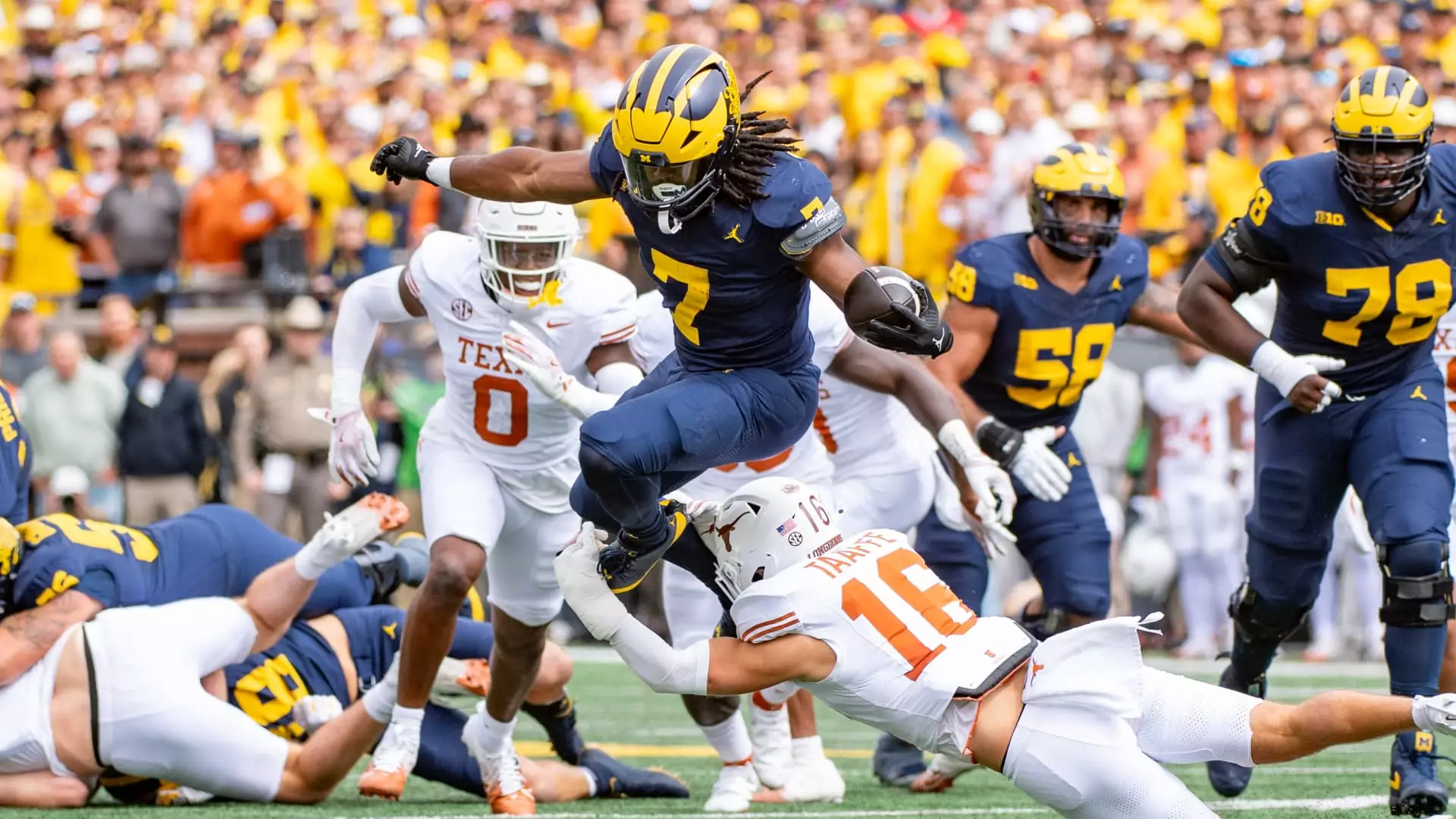This season marks a transformative phase in college football due to the adoption of the expanded 12-team College Football Playoff (CFP) format. This significant shift in playoff structure has not only revved up competition on the field but has also created substantial ripples within the media landscape, particularly for Disney’s networks, including ABC and ESPN. With an increased number of teams participating in the postseason, fans find themselves more invested than ever in the outcomes of games that matter greatly for playoff berths. The result has been an unprecedented spike in viewership, setting the stage for what may be the most popular college football season since 2016.
Disney’s networks have recorded higher than expected engagement metrics, translating to greater interest in advertisements featured during games. According to EDO, a marketing analytics company, viewers are significantly more likely to respond positively to commercials aired during college football broadcasts on Disney networks compared to average viewership metrics for other programming. The heightened engagement is projected to persist, especially during the Thanksgiving weekend, which is a critical time in the college football calendar characterized by numerous rivalries and playoff implications.
This surge in viewership is not coincidental, as the expanded playoff format has transformed the competitive landscape. An iconic match-up between teams like Ohio State and Michigan, or Texas and Texas A&M, gains even more gravitas when playoff stakes are on the line. Kevin Krim, CEO of EDO, emphasizes that the strategic importance of these games translates into more effective advertising opportunities, allowing brands to connect more strongly with potential consumers.
In addition to wave after wave of high-stakes games, the College Football Playoff expansion has led to a more compelling product for advertisers. Jim Minnich, Senior Vice President of Disney Advertising Revenue and Yield Management, highlighted the company’s remarkable successes across its sports content offerings. He noted that viewership on ABC is on track for its best season since 2009, with a staggering proportion of college football fans tuning into Disney channels. Twelve of the fifteen most-watched college football games were aired on ABC this season.
The implications for advertisers are clear. A significant 11% increase in consumer engagement during college football ads reinforces the notion that viewers show heightened intent to explore and purchase products they encounter during commercial breaks. Some brands are already harnessing this engagement, with consumer packaged goods like Jimmy Dean and Just for Men seeing standout performance, alongside restaurants and pharmaceuticals. As advertisers look for effective channels to reach their target audience amid declining traditional viewership, college football stands out as a prime means of tapping into engaged consumer bases.
As media companies grapple with the challenges of a changing landscape—marked by a decline in pay-TV subscriptions and a steady shift toward streaming—it is crucial for networks to capitalize on live sports. Disney’s advertising strategy is bearing fruit, evidenced by the high demand and early renewals for advertising partnerships leading into the next phases of college football’s evolution. In fact, the network is already sold out of its commercial spots leading up to the conference championships, and a staggering 90%-95% of ads for the College Football Playoff games have been allocated.
The continued allure of live sports remains undeniable. Football, especially, has consistently proven to be a goldmine for advertisers, attracting massive audiences willing to engage with both the programming and associated advertisements. Despite a general hesitance in the advertising market, spend levels for sporting events, including college football, remain strong. Krim summarized this phenomenon succinctly, stating that football commands a premium, making it significantly more valuable than general programming.
As media rights for sports continue to escalate, Disney’s significant investment in college football, particularly through SEC rights, highlights a stronger-than-ever demand from advertisers. The multi-billion-dollar contracts, like the recently announced six-year, $7.8 billion agreement between ESPN and the College Football Playoff, underscore this trend. The competitive landscape for viewership and advertising success is intensifying, compelling not just Disney, but networks across the board, to aggressively pursue college football content.
As the season progresses and the playoff picture becomes clearer, the potential for captivating match-ups and high-stakes moments is likely to maintain viewer enthusiasm. This expansion of the CFP presents unique opportunities for advertisers, as well as increasing competition among networks. In a time of significant media transition, college football has emerged as a captivating and steadfast component of media strategy, ensuring that both fans and advertisers remain engaged. In this evolving narrative, the college football playoffs signal not just a new chapter for the sport, but a golden opportunity for media companies to flourish in a competitive environment.

